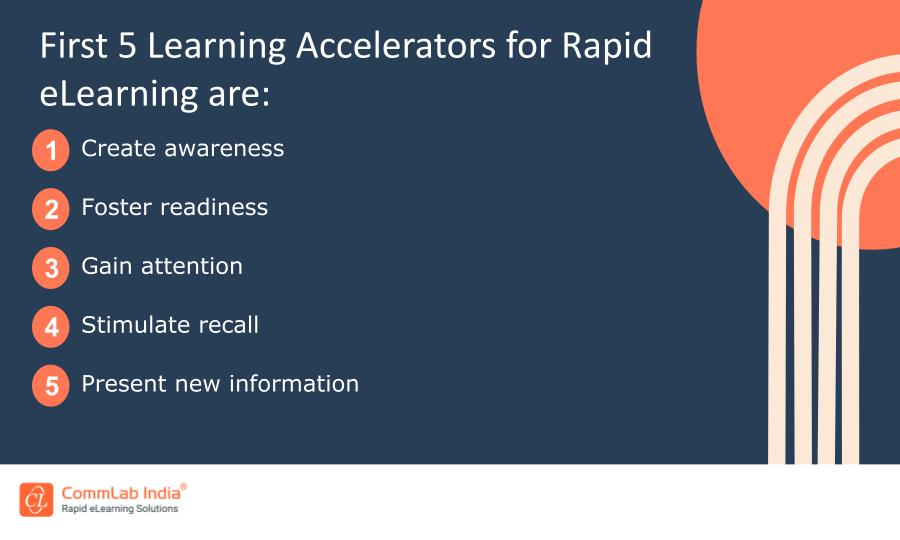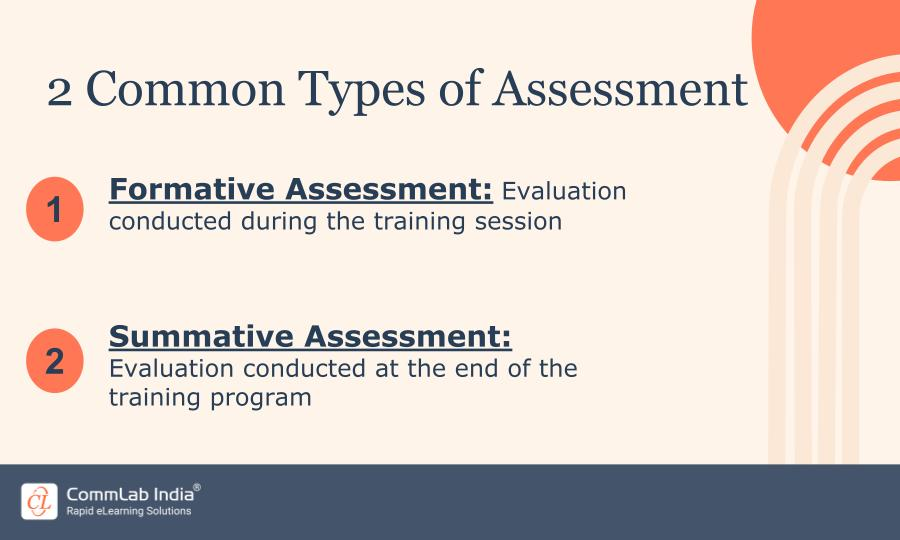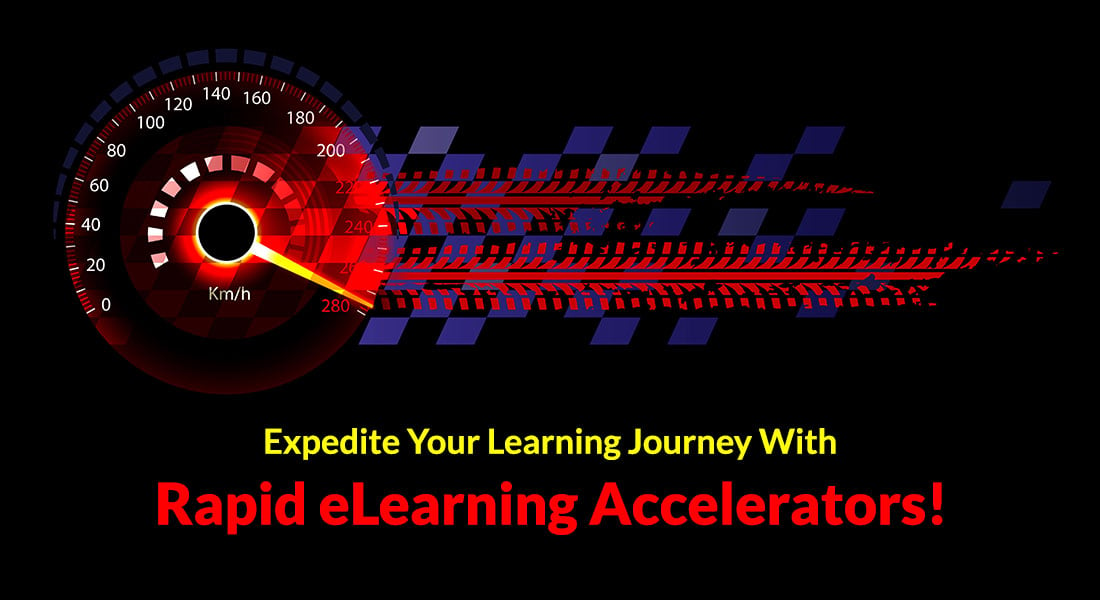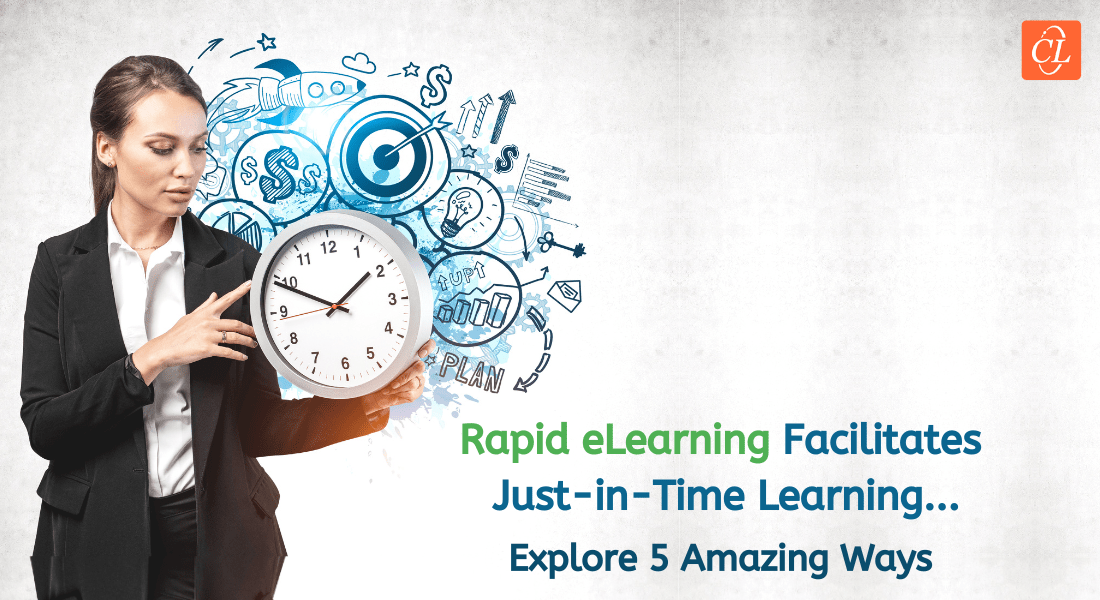5 Accelerators for Rapid eLearning Design and Development to Expedite the Learning Journey (Part 2)

Welcome back on our journey toward facilitating the learning process by achieving success in rapid eLearning design and development. In our previous blog, we covered 5 out of the 10 critical accelerators that help you expedite the learning journey.

Now, let’s get ready to complete the list as, in this blog, I’m going to unveil the remaining 5 accelerators that will help you take your eLearning game to new heights.
Learning Accelerators for Rapid eLearning Design and Development!
Here’s the list:
- Allow your learners to practice
- Provide immediate feedback
- Offer time to reflect
- Access learners
- Prepare learners for knowledge transfer
And that’s not all! I’m not just going to list these elements and leave you to figure out how to apply them. Rather, I’m going to explain how you can leverage each accelerator in your eLearning development process to facilitate a faster and more efficient learning experience than ever before.
Let’s roll!
5 Accelerators for Rapid eLearning Design and Development (Continued)
Allow Your Learners to Practice
I’m sure you must have heard, “Practice makes a man perfect!” And this is true for eLearning as well. It’s important to give your learners plenty of opportunities to practice what they’ve learned during the training course. Implementing the knowledge they have acquired in real-life situations helps them build confidence and efficiency. In fact, it also enables them to retain the information in a better way.
But let’s not mix quantity with quality of practice! That’s right. It’s not just about the amount of practice your learners do, the quality of practice is just as important. So you should try to incorporate interactive simulations, branching scenarios, and other engaging activities in your rapid eLearning design and development. This is a great way to provide a rich learning experience that challenges and motivates your learners.
→Download Now: Rapid eLearning Design for Quick Rollout [eBook]
Provide Immediate Feedback
When it comes to expediting the learning journey, giving timely and relevant feedback goes a long way! It accelerates the learning process and even contributes to maintaining the efficiency of the learning process. If you’re wondering how, it’s because providing immediate feedback to your learners helps them stay engaged and motivated.
Right feedback fills in the gaps in learners’ understanding and enables them to connect the dots in a better way. Moreover, it reinforces what they’ve done well and offers guidance on areas where improvement is needed and how they can improve. To provide constructive feedback, you can leverage the learning analytics. Wondering what is learning analytics and why to leverage it in feedback? Find answers to all such questions in the informative video below.
Offer Time to Reflect
Here’s an example from my own experience. As I was taking my online guitar lessons, I’d watch multiple other videos to complement my learning. And trust me, watching online videos on “How to Play a Guitar” isn’t exactly the same as playing a guitar. While watching the video, you can be very detail-oriented about strumming, holding the guitar, etc. But I realized that when you start playing the guitar, you really need to focus on integrating that information into your playing style.
And that’s where reflection comes in. It includes taking a step back, thinking about what you’ve learned, and applying it in a meaningful way. Learning isn’t just about acquiring new information, it’s also about making sense of that information and integrating it into your existing knowledge base.
So design your eLearning courses in a way that gives your learners enough time and opportunity to reflect on what they’ve learned. It will enable them to make connections between new information and their existing knowledge and deepen their understanding of the training material. You can suggest methods like journaling, participating in group discussions, etc., to boost reflection.
Assess Learners
eLearning assessments are a great way to assess your learners and are an important part of the learning process. They are like the compass in the learning journey that directs your learners toward success! Assessments in eLearning design and development act as an accelerator as they provide feedback on the progress of learners. Based on the learning analytics derived from these assessments, you can identify areas where additional effort is needed and even modify your training methodology.

A word to the wise here is that assessments should be more than simple, plain tests. So make sure your eLearning assessments measure not just knowledge, but also skills and attitudes. They should evaluate learners’ holistic understanding and application part of the concept. This will enable you to get a more comprehensive picture of your learners’ progress, take timely action, and finally guide them toward the desired learning direction.
Prepare Learners for Knowledge Transfer
We are often mistaken that learning ends when the training course is over. On the contrary, it continues to improve and enhance as learners apply the acquired knowledge and skills in real-world situations. So to expedite the learning journey, it is essential that the eLearning design and development includes elements that prepare learners for knowledge transfer.
This can be done by helping the learners see and understand how all that they’ve learned during the training applies in real-life contexts. Moreover, you can augment their learning by providing relevant examples, presenting demos, sharing case studies, and other resources that illustrate the practical applications of the learning. All these elements will enable you to bridge the gap between theory and practice for your learners and prepare them for success beyond the course!
Parting Thoughts!
Finally! We’ve made it to the end of our journey knowing all the 10 accelerators for rapid eLearning design and development success! They are sure to help you expedite the learning journey and deliver desired results to learners as well as the stakeholders. Now remember these elements, implement them, and experience eLearning success in the best light! To leave no stone unturned, check out this brilliant eBook on rapid eLearning design for quick rollout.





![10 Must-Know Tips for Rapid eLearning Course Rollout [Infographic]](https://blog.commlabindia.com/hubfs/blogs/tips-rapid-elearning-course-rollout-infographic.jpg)